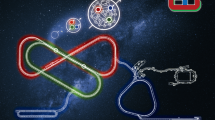Abstract
Measuring the internal structures of the nucleon and the nuclear matter is one of the hot scientific topics in the filed of high-energy nuclear physics, which can answer the fundamental questions about the emergent properties of the nucleon and the nuclear force that binds the nucleons together forming an atomic nucleus. The high-energy lepton-proton/nucleus scattering is a well-established and clear way to probe the inner structure of these subatomic particles, which attracts a lot of interests from the nuclear physicists worldwide. To pursue such scientific goals, an Electron-ion collider in China (EicC) has been proposed as a future high-energy nuclear physics project in China. EicC will focus on the sea quarks in the nucleon, which well compliments the projects of electron-ion collider in US and JLab 12 GeV upgrade. In this article, the plans and conceptual designs of the accelerator and the detectors of EicC are briefly discussed. We illustrate some highlights of the experiments that will be performed at EicC.






Similar content being viewed by others
References
C.N. Yang, R.L. Mills, Phys. Rev. 96, 191 (1954). https://doi.org/10.1103/PhysRev.96.191
D.J. Gross, F. Wilczek, Phys. Rev. Lett. 30, 1343 (1973). https://doi.org/10.1103/PhysRevLett.30.1343
H.D. Politzer, Phys. Rev. Lett. 30, 1346 (1973). https://doi.org/10.1103/PhysRevLett.30.1346
P.A. Zyla, PTEP 2020(8), 083C01 (2020). https://doi.org/10.1093/ptep/ptaa104
J. Ashman et al., Phys. Lett. B 206, 364 (1988). https://doi.org/10.1016/0370-2693(88)91523-7
D. Boer, et al., (2011) preprint ar**v:1108.1713
M. Diehl, Eur. Phys. J. A 52(6), 149 (2016). https://doi.org/10.1140/epja/i2016-16149-3
M. Diehl, Phys. Rept. 388, 41 (2003). https://doi.org/10.1016/j.physrep.2003.08.002
X. Ji, Ann. Rev. Nucl. Part. Sci. 54, 413 (2004). https://doi.org/10.1146/annurev.nucl.54.070103.181302
X.D. Ji, Phys. Rev. Lett. 78, 610 (1997). https://doi.org/10.1103/PhysRevLett.78.610
X.D. Ji, Phys. Rev. Lett. 74, 1071 (1995). https://doi.org/10.1103/PhysRevLett.74.1071
D. Kharzeev, Proc. Int. Sch. Phys. Fermi 130, 105 (1996). https://doi.org/10.3254/978-1-61499-215-8-105
J.J. Aubert et al., Phys. Lett. B 123, 275 (1983). https://doi.org/10.1016/0370-2693(83)90437-9
D.P. Anderle et al., Front. Phys. (Bei**g) 16(6), 64701 (2021). https://doi.org/10.1007/s11467-021-1062-0
A. Accardi et al., Eur. Phys. J. A 52(9), 268 (2016). https://doi.org/10.1140/epja/i2016-16268-9
R. Abdul Khalek, et al., (2021) preprint ar**v:2103.05419
W.C. Chang, J.C. Peng, Prog. Part. Nucl. Phys. 79, 95 (2014). https://doi.org/10.1016/j.ppnp.2014.08.002
X. Chen, F.K. Guo, C.D. Roberts, R. Wang, Few Body Syst. 61(4), 43 (2020). https://doi.org/10.1007/s00601-020-01574-0
R. Wang, J. Evslin, X. Chen, Eur. Phys. J. C 80(6), 507 (2020). https://doi.org/10.1140/epjc/s10052-020-8057-9
D.E. Kharzeev, Phys. Rev. D 104(5), 054015 (2021). https://doi.org/10.1103/PhysRevD.104.054015
R. Wang, W. Kou, Y.P. **e, X. Chen, Phys. Rev. D 103(9), L091501 (2021). https://doi.org/10.1103/PhysRevD.103.L091501
R. Wang, W. Kou, C. Han, J. Evslin, X. Chen, Phys. Rev. D 104(7), 074033 (2021). https://doi.org/10.1103/PhysRevD.104.074033
C.D. Roberts, D.G. Richards, T. Horn, L. Chang, Prog. Part. Nucl. Phys. 120, 103883 (2021). https://doi.org/10.1016/j.ppnp.2021.103883
L. Chang, I.C. Cloët, C.D. Roberts, S.M. Schmidt, P.C. Tandy, Phys. Rev. Lett. 111(14), 141802 (2013). https://doi.org/10.1103/PhysRevLett.111.141802
M. Ding, K. Raya, D. Binosi, L. Chang, C.D. Roberts, S.M. Schmidt, Phys. Rev. D 101(5), 054014 (2020). https://doi.org/10.1103/PhysRevD.101.054014
S.X. Qin, C. Chen, C. Mezrag, C.D. Roberts, Phys. Rev. C 97(1), 015203 (2018). https://doi.org/10.1103/PhysRevC.97.015203
P.C. Barry, N. Sato, W. Melnitchouk, C.R. Ji, Phys. Rev. Lett. 121(15), 152001 (2018). https://doi.org/10.1103/PhysRevLett.121.152001
C. Han, G. **e, R. Wang, X. Chen, Eur. Phys. J. C 81(4), 302 (2021). https://doi.org/10.1140/epjc/s10052-021-09087-8
L. Chang, C.D. Roberts, Chin. Phys. Lett. 38(8), 081101 (2021). https://doi.org/10.1088/0256-307X/38/8/081101
Y.P. **e, X.Y. Wang, X. Chen, Eur. Phys. J. C 81(8), 710 (2021). https://doi.org/10.1140/epjc/s10052-021-09509-7
Y.P. **e, V.P. Goncalves, Eur. Phys. J. C 81(7), 645 (2021). https://doi.org/10.1140/epjc/s10052-021-09453-6
Y.P. **e, X. Cao, Y.T. Liang, X. Chen, Chin. Phys. C 45(4), 043105 (2021). https://doi.org/10.1088/1674-1137/abdea9
S.R. Klein, Y.P. **e, Phys. Rev. C 100(2), 024620 (2019). https://doi.org/10.1103/PhysRevC.100.024620
Acknowledgements
We thank all the members of EicC collaboration and many colleagues all over the globe for making a lot of efforts on the proposal of EicC and the EicC White Paper. This proceeding is partly supported by the Strategic Priority Research Program of Chinese Academy of Sciences under the Grant NO. XDB34030301 and the National Natural Science Foundation of China under the Grant NO. 12005266.
Author information
Authors and Affiliations
Corresponding author
Additional information
Publisher's Note
Springer Nature remains neutral with regard to jurisdictional claims in published maps and institutional affiliations.
Rights and permissions
About this article
Cite this article
Wang, R., Chen, X. The Current Status of Electron Ion Collider in China. Few-Body Syst 63, 48 (2022). https://doi.org/10.1007/s00601-022-01751-3
Received:
Accepted:
Published:
DOI: https://doi.org/10.1007/s00601-022-01751-3



